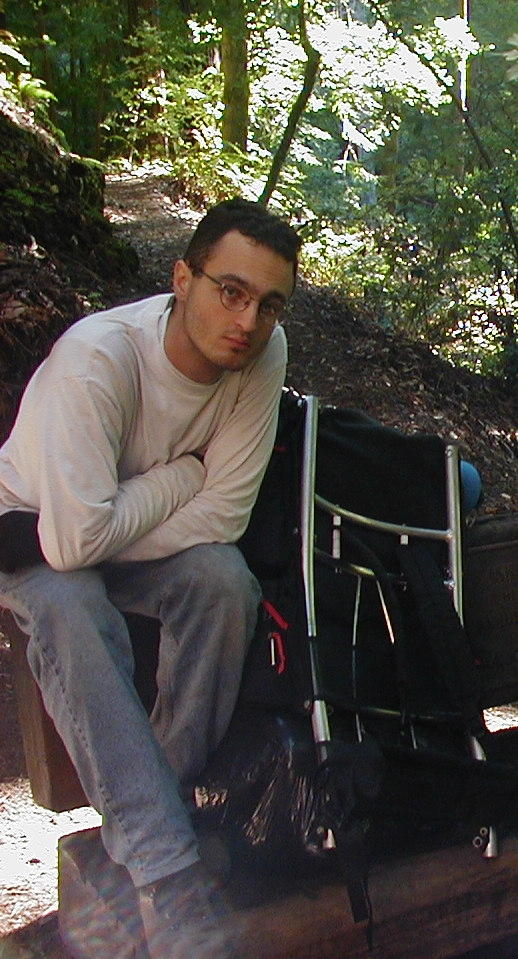Scorpion Community Ecology (my research)
Well, the
summer research season has begun, but I've only spent a little time in
the field so far (needs to be warmer, and not raining). I'll
likely spend a good portion of my summer over in Box Elder County,
Utah, studying the scorpion populations at a site that someone else in
the MacMahon lab (Scott Newbold) has already done some work at.
There is a nice elevational and habitat gradient there that he has
established (it's about 10km long total, running from the
juniper-covered mountains to the salt flats near the lake). He
studied ants and horned lizards there for his doctoral dissertation,
but I think it's a much better site for studying scorpions. From
what I can tell, the densitities there just *might* be as high as in
some of the best-studied scorpion populations on earth. I haven't
done a really good survey yet, but there seem to be a number of areas
out there where the burrow density seems to be about one per square
meter. That equals a lot of scorpions on the landscape
level.
There are at
least three scorpion species at the site: Anuroctonus phaeodactylus, which is
fairly large, and an obligate burrower. The females and young
rarely emerge from their burrows, while the males can often be found on
the surface. Theother species that's relatively
abundant there is Vaejovis confusus.
I've also collected a few specimens there of
another species (Paruroctonus
boreus). They were in an area that was somewhat
marginal to the region I was surveying, because the habitat was a
little different (rockier slopes). I also have a secret hope that
I might find the giant hairy scorpion (Hadrurus
spadix) in the area.
I'm currently interested in the
mechanisms that enable ecolgically similar species (that eat the same
thing, etc) to live together. One ecological theory states that
similar species shouldn't be able to co-exist, since one of them will
always be a slightly better competitor than the others. Stated
one way, "complete competitors cannot co-exist". So, the species
involved must not be complete competitors... that is, there must be
some significant differences in their life history traits that make
them slightly different ecologically. Sometimes, body size will
allow that (with larger animals eating larger prey, etc). I don't
think that's the case with these scorpions, since they are pretty
closely matched in size. Soil has been shown to be an important
factor in separating other scorpion species ecogically, and I think it
may be in this case also. I'll spend part of this summer trying
to figure out that relationship, and hopefully come up with some
better-developed research questions in the process.
During part of
this summer, I would also like to do a large-scale survey of Great
Basin scorpions. I'll start by doing a lot of driving and
camping. I intend to cover a large portion of western Utah, head
into Nevada, and also cover portions of southern Idaho.
My goal with this is to find as many scorpions as possible, search for
a permanent field site (if I don't end up working at Scott's site), and
study how each of the species that I encounter selects its habitat
throughout the species range. It's also an excuse to get to know
the great state of Utah, and do some camping in the process.
|

